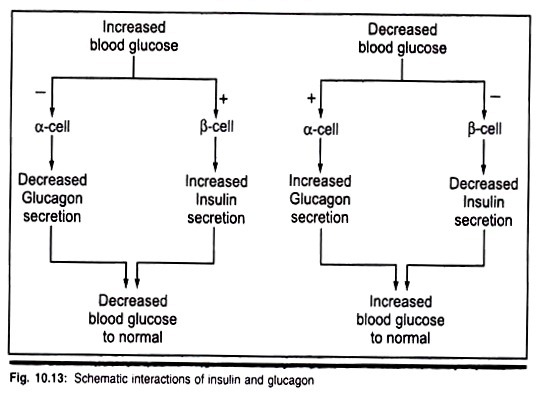ADVERTISEMENTS:
Read this article to learn about the approaches and future of gene therapy.
Advances in biochemistry and molecular biology have helped to understand the genetic basis of inherited diseases. It was a dream of the researchers to replace the defective genes with good ones, and cure the genetic disorders.
Gene therapy is the process of inserting genes into cells to treat diseases. The newly introduced genes will encode proteins and correct the deficiencies that occur in genetic diseases. Thus, gene therapy primarily involves genetic manipulations in animals or humans to correct a disease, and keep the organism in good health. The initial experiments on gene therapy are carried out in animals, and then in humans. Obviously, the goal of the researchers is to benefit the mankind and improve their health.
ADVERTISEMENTS:
An overview of gene therapy strategies is depicted in Fig. 13.1. In gene augmentation therapy, a DNA is inserted into the genome to replace the missing gene product. In case of gene inhibition therapy, the antisense gene inhibits the expression of the dominant gene.
Approaches for Gene Therapy:
There are two approaches to achieve gene therapy.
1. Somatic Cell Gene Therapy:
The non- reproductive (non-sex) cells of an organism are referred to as somatic cells. These are the cells of an organism other than sperm or eggs cells, e.g., bone marrow cells, blood cells, skin cells, intestinal cells. At present, all the research on gene therapy is directed to correct the genetic defects in somatic cells. In essence, somatic cell gene therapy involves the insertion of a fully functional and expressible gene into a target somatic cell to correct a genetic disease permanently.
2. Germ Cell Gene Therapy:
ADVERTISEMENTS:
The reproductive (sex) cells of an organism constitute germ cell line. Gene therapy involving the introduction of DNA into germ cells is passed on to the successive generations. For safety, ethical and technical reasons, germ cell gene therapy is not being attempted at present.
The genetic alterations in somatic cells are not carried to the next generations. Therefore, somatic cell gene therapy is preferred and extensively studied with an ultimate objective of correcting human diseases. Development of gene therapy in humans for any specific disease involves the following steps. In fact, this is a general format for introducing any therapeutic agent for human use.
1. In vitro experiments and research on laboratory animals (pre-clinical trials).
2. Phase I trials with a small number (5-10) of human subjects to test safety of the product.
3. Phase II trials with more human subjects to assess whether the product is helpful.
4. Phase III trials in large human samples for a final and comprehensive analysis of the safety and efficacy of the product.
As such, gene therapy involves a great risk. There are several regulatory agencies whose permission must be sought before undertaking any work related to gene therapy. Recombinant DNA Advisory Committee (RAC) is the supervisory body of the National Institute of Health, U.S.A., that clears proposals on experiments involving gene therapy. A large number of genetic disorders and other diseases are currently at various stages of gene therapy trials. A selected list of some important ones is given in Table 13.1.
The Future of Gene Therapy:
Theoretically, gene therapy is the permanent solution for genetic diseases. But it is not as simple as it appears since gene therapy has several inbuilt complexities. Gene therapy broadly involves isolation of a specific gene, making its copies, inserting them into target tissue cells to make the desired protein. The story does not end here.
ADVERTISEMENTS:
It is absolutely essential to ensure that the gene is harmless to the patient and it is appropriately expressed (too much or too little will be no good). Another concern in gene therapy is the body’s immune system which reacts to the foreign proteins produced by the new genes.
The public, in general, have exaggerated expectations on gene therapy. The researchers, at least for the present, are unable to satisfy them. As per the records, by 1999 about 1000 Americans had undergone clinical trials involving various gene therapies.
Unfortunately, the gene therapists are unable to categorically claim that gene therapy has permanently cured any one of these patients! Some people in the media (leading newspapers and magazines) have openly questioned whether it is worth to continue research on gene therapy!
It may be true that as of now, gene therapy due to several limitations, has not progressed the way it should, despite intensive research. But a breakthrough may come anytime, and of course, this is only possible with persistent research. And a day may come (it might take some years) when almost every disease will have a gene therapy, as one of the treatment modalities. And gene therapy will revolutionize the practice of medicine!


